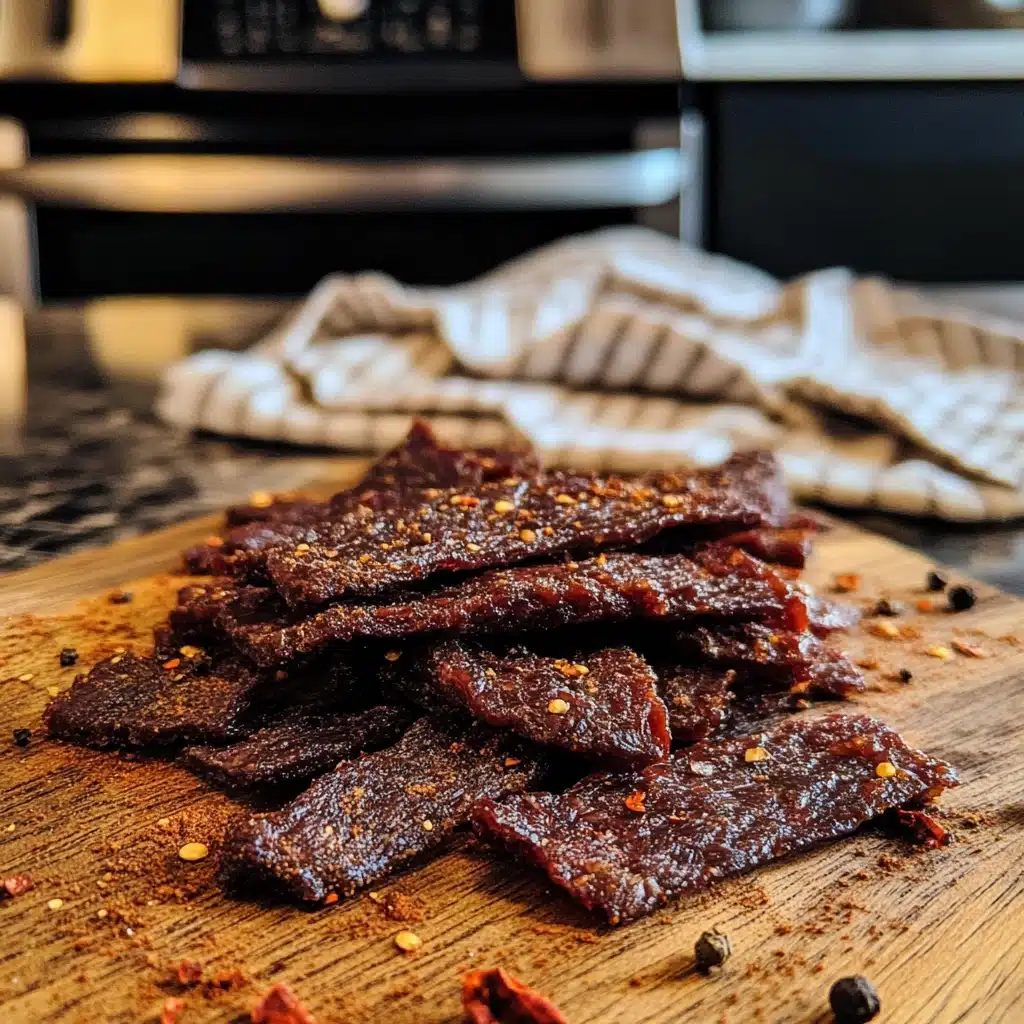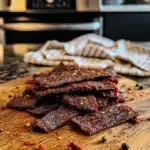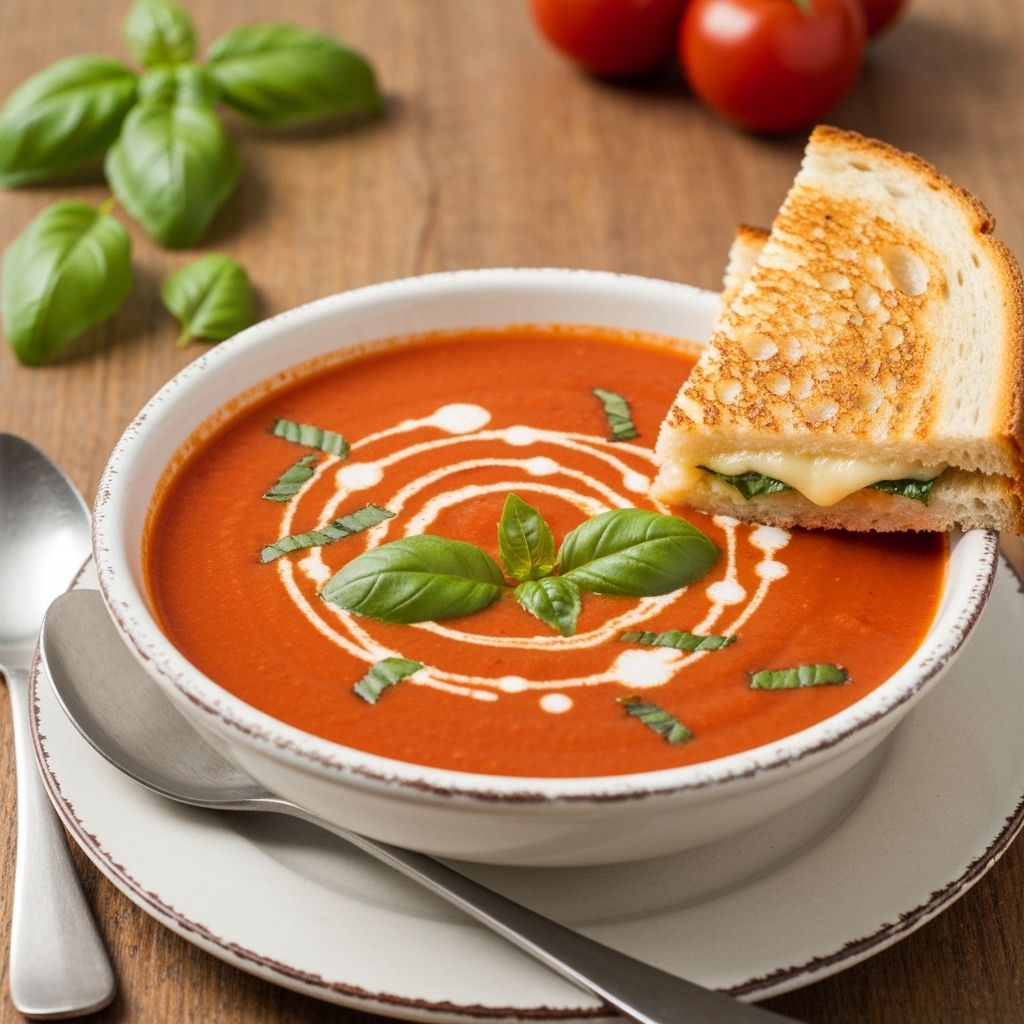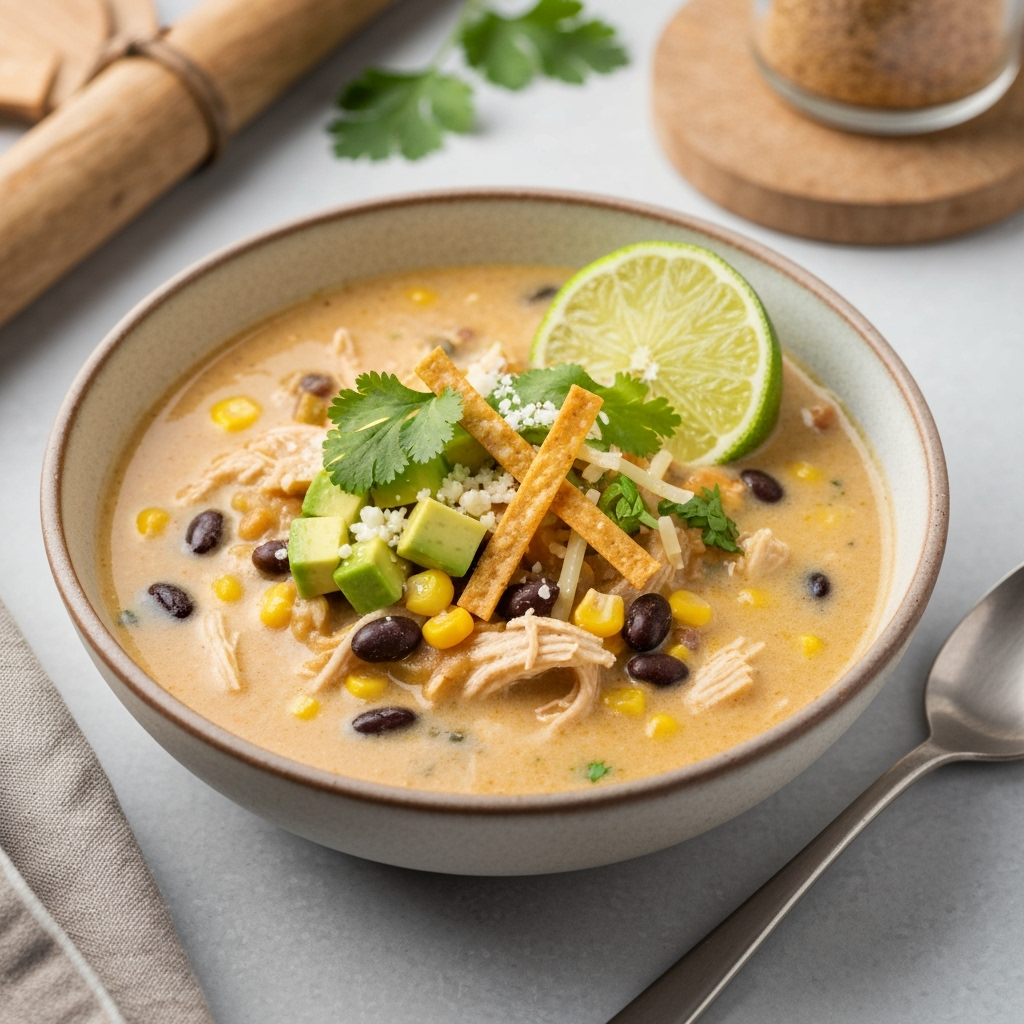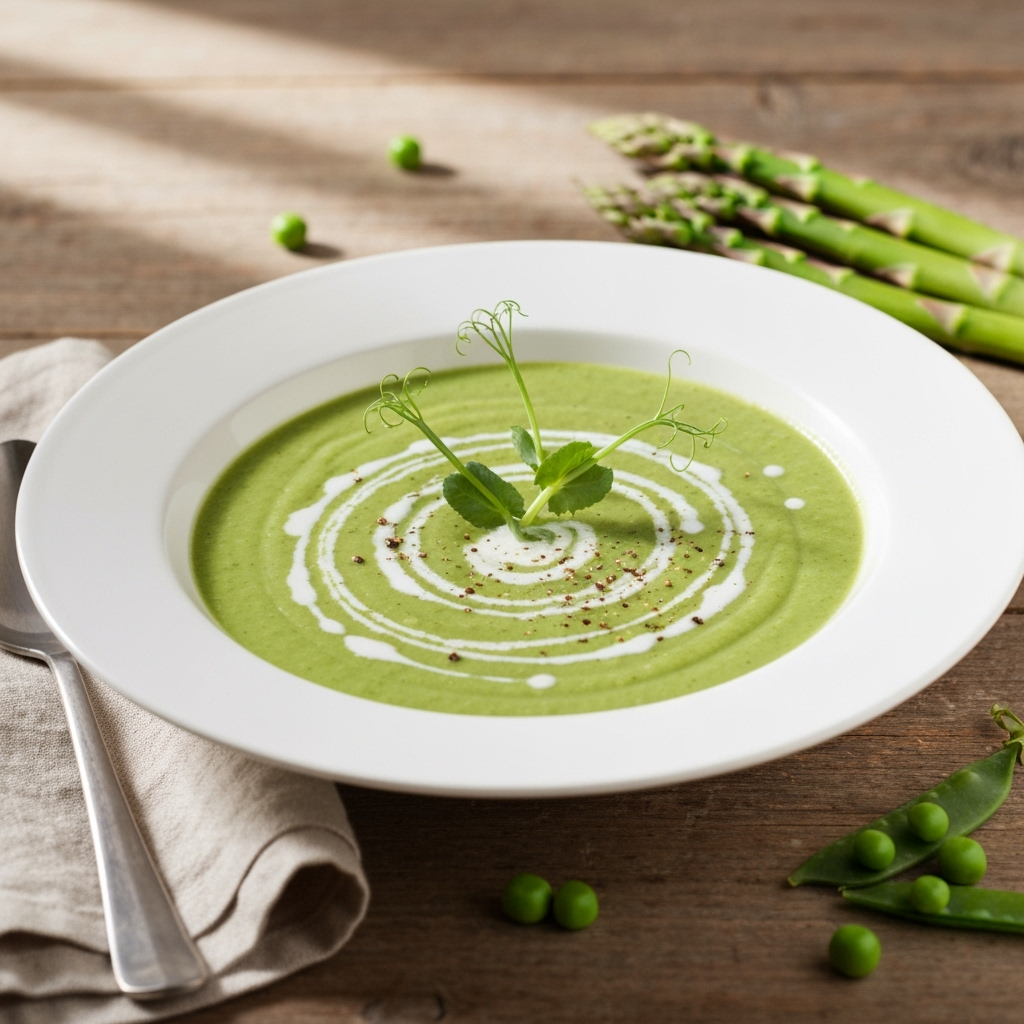Ground beef jerky is the budget-friendly, protein-packed snack that’s easier to make at home than you might think. Whether you’re a weekend meal prepper or just love having healthy snacks ready to go, making jerky from ground beef offers unbeatable flexibility. You don’t need expensive cuts of steak or complicated tools—just a few simple ingredients, a dehydrator or oven, and a bit of patience.
In this article, we’ll walk you through how to make ground beef jerky from scratch, from choosing the right meat to dehydration, flavoring, and storage. We’ll also answer the top questions people ask, like: “Is 80/20 ground beef okay?” and “Do you need curing salt?” Along the way, you’ll get tips, tricks, and tested techniques to ensure your jerky turns out flavorful, safe, and satisfying every time.
Table of Contents
What Is Ground Beef Jerky?
Ground beef jerky is exactly what it sounds like—jerky made from ground meat rather than whole muscle cuts. It’s shaped into strips or small rounds and then dried until chewy. Unlike traditional jerky, which often requires slicing against the grain, ground beef jerky can be mixed with spices and formed easily, making it ideal for beginners.
You can use a jerky gun, piping bag, or even mold it by hand. The key is consistency in thickness and proper drying for both texture and food safety. With ground beef, you’re also in control of fat content, spices, and preservatives.
Why Use Ground Beef Instead of Sliced Meat?
Here’s why ground beef jerky is rising in popularity:
| Feature | Ground Beef Jerky | Traditional Jerky (Sliced) |
|---|---|---|
| Cost | Lower | Higher (due to better cuts) |
| Ease of Preparation | Beginner-friendly | Requires slicing tools/skills |
| Texture Customization | Softer or chewier based on prep | More chewy by default |
| Spice Integration | Mixed throughout the meat | Mostly on surface |
| Shape Flexibility | Strips, rounds, bites | Mostly strips |
Plus, it’s ideal for kids or people who prefer a less tough jerky. You can easily control the seasoning, moisture, and size of each piece.
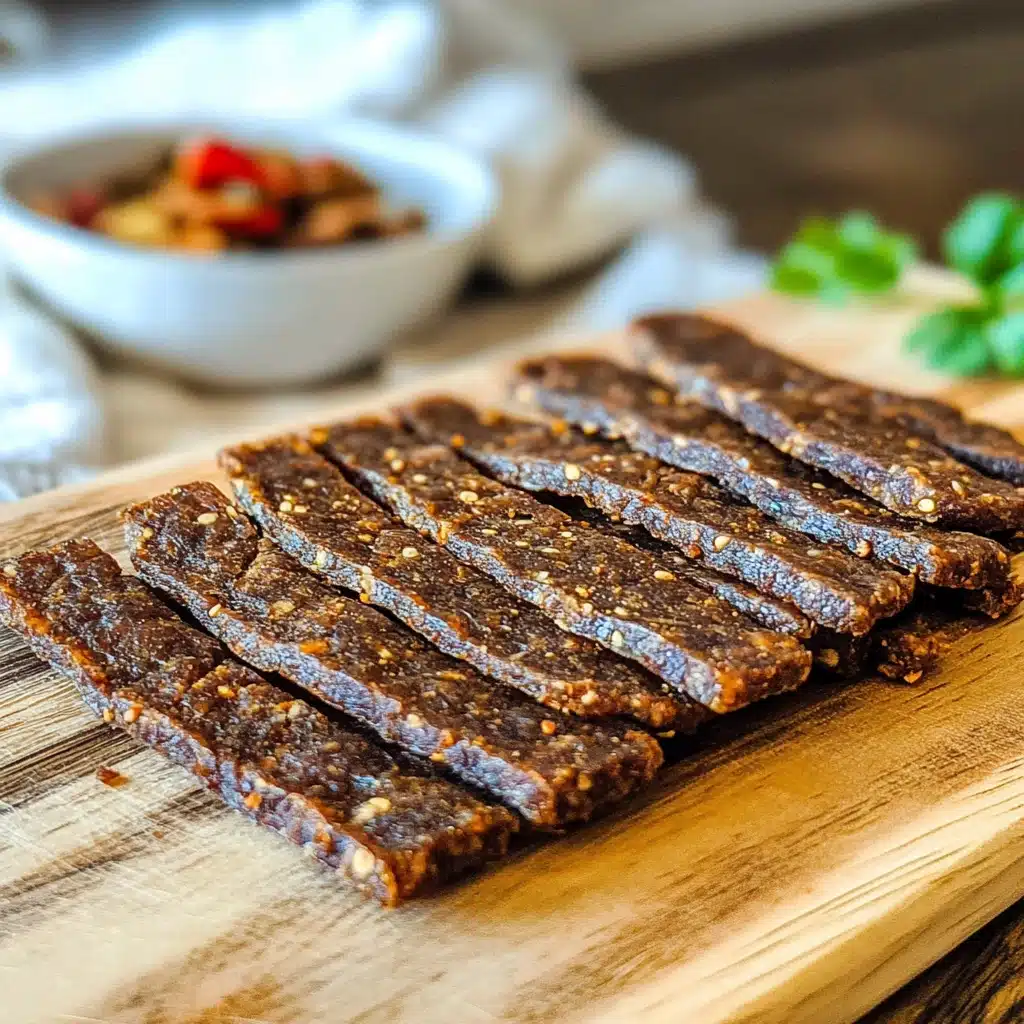
Ground Beef Jerky – The Complete Homemade Guide for Tasty, Lean Snacks
This easy ground beef jerky recipe is budget-friendly, protein-packed, and perfect for beginners. No jerky gun required—just lean ground beef, pantry spices, and an oven or dehydrator!
- Prep Time: 20 minutes
- Cook Time: 9 hours
- Total Time: 9 hours 20 minutes
- Yield: 6 1x
- Category: Dinner
- Method: Easy
- Cuisine: American
Ingredients
Basic Jerky Without Curing Salt:
- 1 lb lean ground beef (90/10 or 93/7)
- 1½ tsp salt (sea or table)
- 1 tsp garlic powder
- 1 tsp onion powder
- 1 tsp smoked paprika
- 1 tbsp Worcestershire sauce
- 1 tbsp soy sauce
- ½ tsp black pepper
- Optional: 1 tbsp maple syrup or honey (for a sweet twist)
Optional for Extended Shelf Life:
- ¼ tsp Prague Powder #1 (curing salt)
Instructions
-
Mix the Meat
In a large bowl, combine ground beef with all spices and sauces. Mix thoroughly with your hands until evenly seasoned. Chill for 4–24 hours. -
Form the Jerky
-
Without a Jerky Gun: Place meat between two sheets of parchment paper. Roll to ¼-inch thickness. Slice into strips or rounds using a knife or pizza cutter.
-
Or, use a zip-top bag with the corner cut off to pipe strips onto trays.
-
-
Dry the Jerky
-
Dehydrator: Set to 160°F. Dry for 4–6 hours until jerky is dry but still pliable.
-
Oven: Set to lowest setting (usually 170°F). Prop the door open slightly for airflow. Dry 5–6 hours. Flip halfway through.
-
- Cool & Store
Let jerky cool completely. Store in airtight container or vacuum seal. Refrigerate if not using curing salt.
Notes
- For safety, ensure internal temperature reaches 160°F.
- Curing salt is optional but helps with preservation.
- Blot with paper towels halfway through drying to remove grease.
- Nutrition will vary based on ingredients and marinade.
Nutrition
- Serving Size: 1 portion
- Calories: 110
- Sodium: 450mg
- Fat: 4g
- Carbohydrates: 1g
- Protein: 14g
Choosing the Right Ground Beef
Is Ground Beef Good for Jerky?
Yes—ground beef is not only good, it’s ideal for jerky if you want a tender texture and versatile flavor. Unlike whole muscle cuts, ground beef lets you mix seasonings directly into the meat, creating an even flavor throughout each bite. It’s also easier to chew, making it a popular choice for kids, older adults, and anyone who prefers a softer jerky.
Here’s why ground beef is a smart choice:
- Budget-friendly: Lean ground beef (especially 90/10 or 93/7) is cheaper than traditional top round or flank steak.
- Even seasoning: Spices and sauces get kneaded into the meat—not just applied to the surface.
- Flexible drying: Works well in dehydrators, ovens, and even air fryers.
- Customizable texture: Softer or firmer based on your preference.
If you’re not sold yet, check out this recipe that uses air frying for beef jerky, an excellent technique to combine with ground beef:
Discover great ideas like our Air Fryer Beef Jerky Recipe
Can You Use 80/20 Ground Beef for Jerky?
Technically, yes—but it’s not recommended. The 80/20 ratio contains 20% fat, which can cause problems during dehydration and storage. Here’s what to consider:
- Fat doesn’t dehydrate: Fat can turn rancid over time, shortening shelf life.
- Texture becomes greasy: Your jerky might feel slick instead of chewy.
- Uneven drying: Higher fat slows down dehydration and can lead to bacteria growth.
For best results, opt for:
| Ground Beef Type | Fat Content | Best Use Case |
|---|---|---|
| 80/20 | 20% | Only if eaten within 1–2 days |
| 85/15 | 15% | Still risky for long-term storage |
| 90/10 or leaner | 10% or less | Best choice for jerky |
Pro tip: If 90/10 isn’t available, you can blot the jerky with paper towels halfway through drying to remove surface grease. But for safety and quality, leaner is always better.
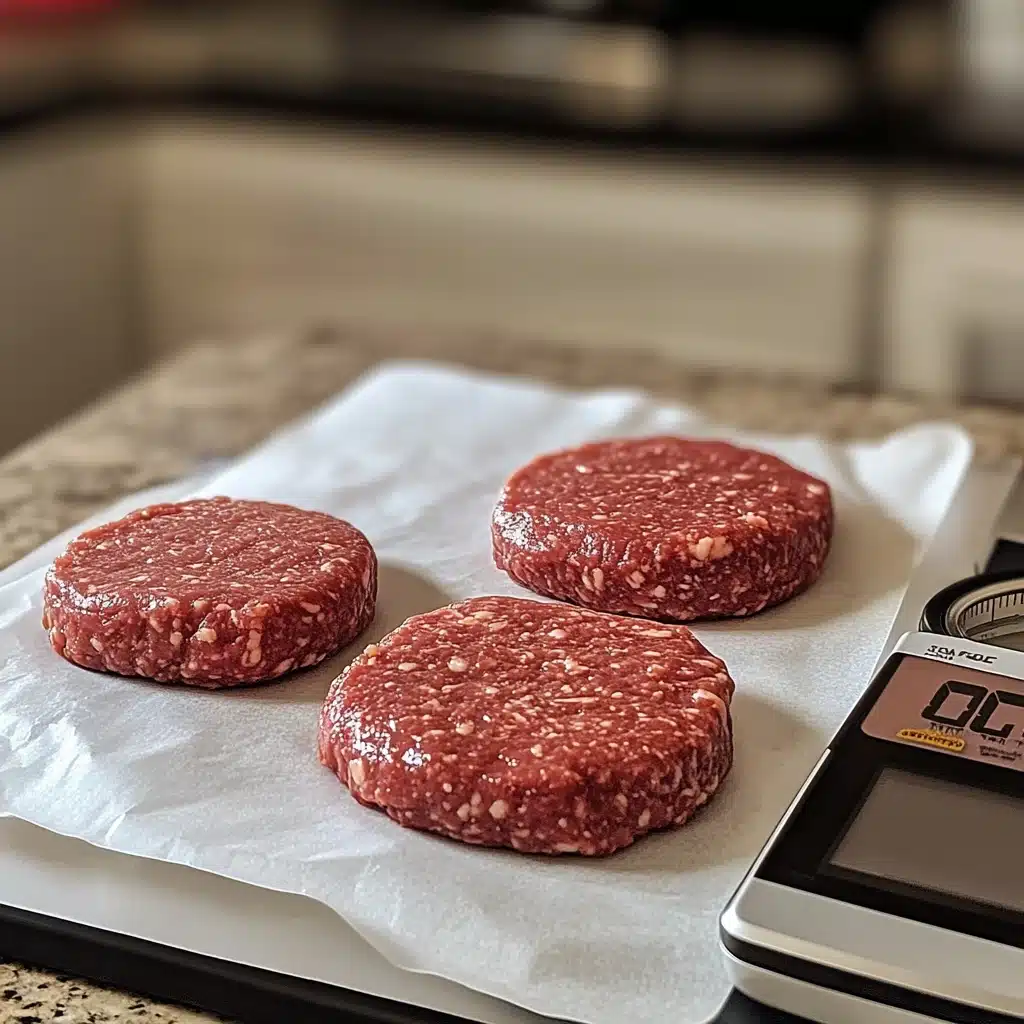
Essential Ingredients and Equipment
Ground Beef Jerky Ingredients (With and Without Curing Salt)
The beauty of ground beef jerky is that you can control every element of the recipe—from spice levels to preservatives. Whether you’re a purist who avoids curing salt or a traditionalist who swears by it, here’s what you need:
Basic Ground Beef Jerky Recipe (Without Curing Salt):
- 1 lb lean ground beef (90/10 or 93/7)
- 1½ tsp salt (table or sea salt)
- 1 tsp garlic powder
- 1 tsp onion powder
- 1 tsp smoked paprika
- 1 tbsp Worcestershire sauce
- 1 tbsp soy sauce
- ½ tsp black pepper
- Optional: 1 tbsp maple syrup or honey (for a slightly sweet flavor)
This version is perfect for short-term storage (under 1 week) if kept in the fridge or consumed within 48 hours at room temp.
Extended Shelf-Life Version (With Curing Salt):
- Everything above, plus 1/4 tsp Prague Powder #1 (curing salt) per pound of meat
- Why? Curing salt kills pathogens during low-temp drying and extends shelf life
Tip: Mix spices into the meat like you would a meatloaf. Let it sit for 4–24 hours in the fridge for deep flavor.
Tools You’ll Need: Dehydrator, Oven, Jerky Gun Alternatives
You don’t need a high-end setup to make delicious jerky. Here’s a quick look at what works:
| Tool | Function | Alternative |
|---|---|---|
| Dehydrator | Best for even drying and temperature control | N/A |
| Oven | Works well at 170°F–200°F | Use lowest setting with door cracked open |
| Jerky gun | Presses ground meat into strips or sticks | Zip-top bag with snipped corner, or piping bag |
| Parchment paper | Prevents sticking in ovens | Silicone mats |
| Cooling rack | Lets air circulate around meat | Mesh baking sheet or wire rack |
If you’re not using a jerky gun, don’t worry. We’ll show you in the next section how to form perfect strips by hand.
Ground Beef Jerky Preparation Techniques
How to Make Ground Beef Jerky Without a Gun
Don’t own a jerky gun? No worries—you can still make perfectly shaped ground beef jerky using tools you already have in your kitchen. These DIY methods are cost-effective, simple, and work just as well when done right.
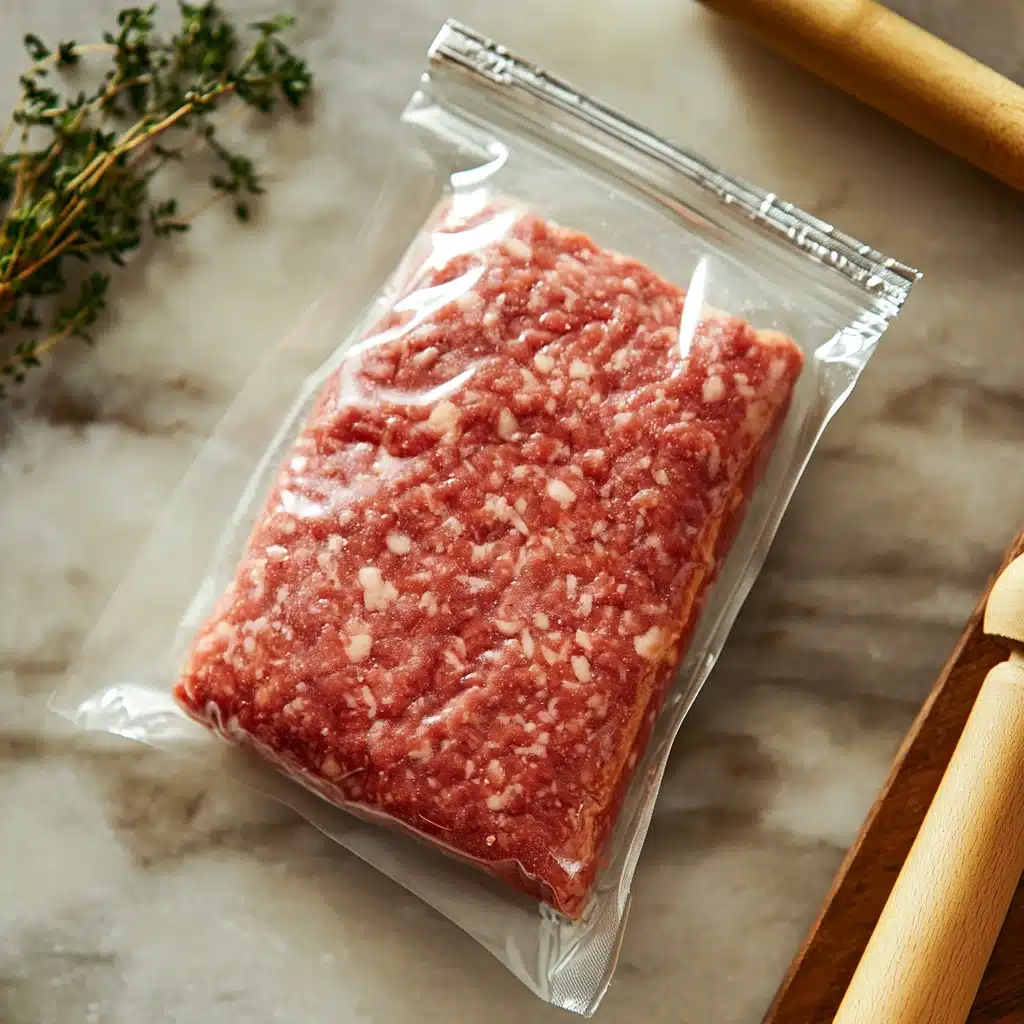
Method 1: Using a Zip-Top Bag
- Fill a gallon-size zip-top bag with your seasoned ground beef mixture.
- Flatten the meat evenly across the bag using a rolling pin or your hands until it’s about 1/4 inch thick.
- Slice the bag open on three sides and peel back the top layer.
- Cut the meat into strips using a knife or pizza cutter.
- Place the strips on a dehydrator tray or baking sheet lined with parchment paper.
Method 2: Baking Sheet with Parchment Paper
- Spread the seasoned meat onto a sheet of parchment paper.
- Cover with another sheet and use a rolling pin to flatten to desired thickness.
- Remove the top sheet and slice into jerky strips or rounds.
- Transfer pieces to a drying rack or oven tray.
Method 3: Ice Cream Scoop for Jerky “Chips”
- Use a cookie or ice cream scoop to portion out uniform balls of ground meat.
- Flatten each with the back of a spoon or spatula.
- These small rounds are perfect for bite-sized beef jerky snacks—especially great for lunchboxes or protein-packed snacks.
No jerky gun? No problem. These simple methods save money, time, and still give you high-quality homemade ground beef jerky.
Forming Uniform Ground Beef Jerky Strips or Rounds (without a jerky gun)
Getting consistent thickness is crucial for proper dehydration. Uneven pieces can become over-dried or, worse, under-dried and unsafe to eat. Here’s how to ensure uniformity every time you make ground beef jerky:
- Target Thickness: Stick to 1/4 inch or thinner for even drying and great texture.
- Use Spacers: Guide your rolling pin with chopsticks or skewers to maintain thickness.
- Stick to One Shape per Batch: Choose strips or rounds—not both—to ensure even drying times.
- Pre-score Meat: Want tear-apart strips? Score your jerky before it goes into the dehydrator.
Quick Thickness Chart for Ground Beef Jerky
| Thickness | Drying Time (approx.) | Texture |
|---|---|---|
| 1/8 inch | 3.5 to 4 hours | Firm and crisp |
| 1/4 inch | 4.5 to 5.5 hours | Chewy, classic beef jerky |
| Over 1/4 inch | 6+ hours | Risk of under-drying |
When in doubt, go thinner. It’s safer, and you can always soften the jerky later by sealing it with a moist paper towel for a few hours in an airtight container. But under-dried ground beef jerky? That’s not a risk worth taking.
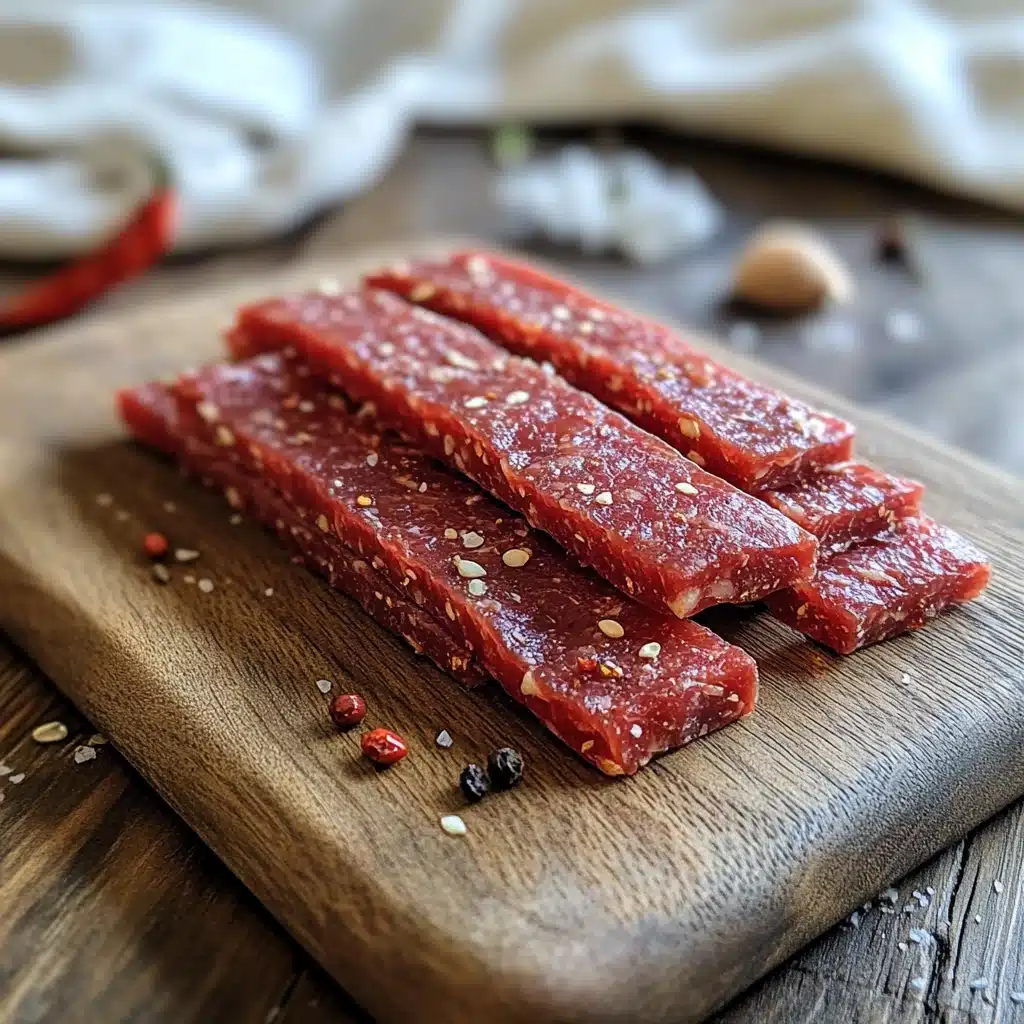
Dehydration Time and Temperature Guidelines
How Long Does Ground Beef Jerky Take to Dehydrate?
The dehydration time for ground beef jerky depends on several factors—thickness, fat content, drying method, and temperature. On average, expect 4 to 6 hours for 1/4-inch thick jerky. But don’t just watch the clock—look for texture and feel.
Here’s what affects drying time:
- Thickness of the meat: Thicker strips need more time.
- Moisture/fat content: Higher fat slows drying and can cause uneven results.
- Air circulation: Proper spacing on trays helps meat dry uniformly.
- Device used: Dehydrator, oven, or air fryer each work differently.
Use this general guideline:
| Device | Temp | Drying Time | Check Doneness |
|---|---|---|---|
| Dehydrator | 160°F | 4–6 hours | Jerky bends without breaking |
| Oven (convection) | 170°F | 5–6 hours | Exterior firm, interior still chewy |
| Air fryer (batch) | 180°F | 2.5–4 hours | Works best with small, uniform pieces |
💡 Tip: Always blot excess grease halfway through drying—especially when using ground beef. It prevents surface oil and improves final texture.
For best results, start checking at the 4-hour mark. Jerky is ready when:
- It’s firm but pliable
- Doesn’t snap when bent
- No raw meat spots
- Doesn’t feel sticky or greasy
Looking for an easy way to get that chewy texture fast? Don’t miss our Air Fryer Beef Jerky Recipe for a quicker way to prep small batches.
Dehydrator vs. Oven Methods: Which One is Better?
While both can make great jerky, they do have pros and cons. If you’re serious about jerky, a dehydrator offers more control. But your home oven works just fine if you’re just starting out.
| Method | Pros | Cons |
|---|---|---|
| Dehydrator | Energy-efficient, even drying, temperature control | Requires counter space, initial cost |
| Oven | Convenient, no extra equipment | Can dry unevenly, higher energy usage |
| Air Fryer | Quick for small batches, crispy edges | Not ideal for large quantities or thick strips |
Whichever you choose, make sure the internal temp of the jerky reaches 160°F to kill bacteria. If using a dehydrator, preheat or finish jerky in an oven at 275°F for 10 minutes as a food safety measure—especially if you’re not using curing salt.
Want a faster way to make jerky without using a dehydrator or oven? If you’re short on time or prefer a crispier finish, the air fryer might be your new best friend. It’s perfect for small batches and delivers great flavor in less time.
Learn how to make beef jerky in an air fryer with our easy step-by-step guide—no special tools or dehydrator needed!
Storing and Preserving Your Homemade Jerky
How Long Does Homemade Ground Beef Jerky Last?
Properly prepared and stored, ground beef jerky can last anywhere from a few days to several weeks—depending on your method and ingredients. If made without curing salt, it’s best eaten within 3 to 7 days. But with the right storage and curing agents, it can stay fresh much longer.
Here’s a breakdown of shelf life by storage method:
| Storage Type | With Curing Salt | Without Curing Salt |
|---|---|---|
| Room Temp (in airtight bag) | 1–2 weeks | 2–3 days |
| Refrigerator | Up to 1 month | 5–7 days |
| Freezer (vacuum-sealed) | 4–6 months | 1–2 months |
Tip: Use vacuum sealing for maximum shelf life and freshness. Oxygen is the enemy of jerky.
Best Practices for Packaging and Storage
To keep your ground beef jerky safe and delicious, follow these expert storage guidelines:
1. Cool Completely Before Storing
Let the jerky cool to room temperature first. Warm jerky trapped in a container releases moisture—leading to mold and spoilage.
2. Use Airtight Containers
Use vacuum-sealed bags, mason jars with oxygen absorbers, or zip-top bags with as much air removed as possible. Keep out light and air to preserve freshness.
3. Label and Date
Always label your jerky with the preparation date. You’d be surprised how easy it is to forget when you made that batch!
4. Refrigerate If You Didn’t Use Curing Salt
When skipping curing salt, assume a shorter shelf life. Store in the fridge and eat within 5–7 days.
5. Freeze Long-Term Batches
For jerky made in bulk, freezing is the safest option. Vacuum-sealed jerky can last up to 6 months in the freezer.
Here’s a quick checklist to maximize shelf life:
- Use lean ground beef (90/10 or leaner)
- Avoid excess moisture
- Store in cool, dark environments
- Refrigerate or freeze if not eaten quickly
- Avoid stacking hot jerky in bags (wait till fully cooled)
Flavoring and Marinade Ideas
Classic, Spicy, and Sweet Marinade Recipes for Ground Beef Jerky
One of the biggest perks of making ground beef jerky at home is the ability to customize flavor profiles to match your taste buds. Whether you love a smoky classic, crave some heat, or enjoy a touch of sweetness, the marinade makes all the difference.
Here are three go-to recipes for homemade jerky seasoning:
1. Classic Smoky Jerky Marinade
Perfect for fans of traditional beef jerky flavor.
- 1 tbsp soy sauce
- 1 tbsp Worcestershire sauce
- 1 tsp liquid smoke
- 1 tsp garlic powder
- 1 tsp onion powder
- 1 tsp smoked paprika
- ½ tsp black pepper
- ½ tsp salt
Let ground beef marinate in this mixture for at least 4 hours—preferably overnight—for deep, balanced flavor.
2. Spicy Sriracha Jerky Marinade
For a hot and tangy kick.
- 2 tbsp soy sauce
- 1 tbsp Sriracha or hot sauce
- 1 tsp cayenne pepper
- ½ tsp chili flakes
- 1 tsp garlic powder
- ½ tsp cumin
- 1 tsp brown sugar
Pro tip: Mix this into lean ground beef thoroughly and let it chill for 6–12 hours before forming into strips.
3. Sweet Teriyaki Jerky Marinade
A crowd-pleasing blend of sweet and savory.
- 2 tbsp teriyaki sauce
- 1 tbsp honey or maple syrup
- ½ tsp ground ginger
- 1 tsp sesame oil
- 1 tsp garlic powder
- 1 tbsp soy sauce
Sweet jerky can burn quicker during dehydration—watch it closely and consider lowering the temp slightly.
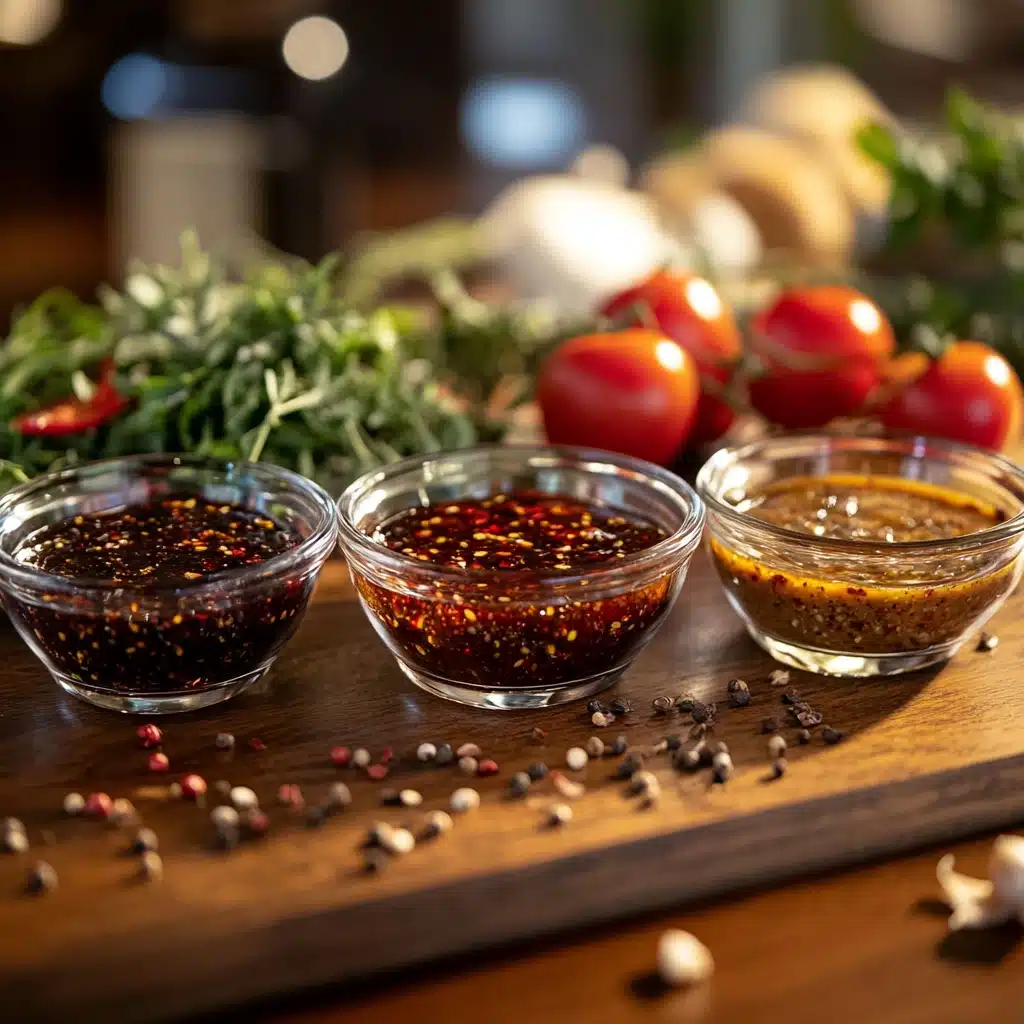
Tips for Balancing Flavor and Texture
Great ground beef jerky is all about balance—salty, sweet, tangy, and spicy, paired with a chewy yet tender texture. Here’s how to dial it in:
1. Don’t Overdo the Salt
While salt helps preserve the jerky, too much can overpower your flavors. Aim for balance, especially if you’re using soy or Worcestershire.
2. Mix Well
Since you’re working with ground meat, mix the marinade directly into the meat for uniform seasoning. Unlike whole muscle jerky, ground beef absorbs flavor more efficiently.
3. Rest Time is Essential
Allow your seasoned meat to rest for at least 4–24 hours in the fridge. This helps flavors meld and firm up the texture.
4. Avoid Wet Marinades
Too much liquid makes ground beef mushy. Stick with paste-like marinades or let the mixture drain for a few minutes before forming.
5. Taste and Adjust
Make a small test batch before drying a full pound. It’s easier to fix flavor before dehydrating than after.
Pro tip: Add a dash of liquid smoke for that authentic smoky BBQ flavor without using a smoker.
Nutritional Benefits of Ground Beef Jerky
Low-Carb, High-Protein Benefits of Ground Beef Jerky
When it comes to nutrient-dense snacks, ground beef jerky hits the sweet spot for anyone following a low-carb, high-protein lifestyle. It’s no wonder jerky is a go-to for athletes, busy professionals, and keto enthusiasts alike.
Here’s why this lean, chewy snack is a nutritional powerhouse:
1. High in Protein
Lean ground beef provides approximately 12–15 grams of protein per ounce of jerky. That’s perfect for curbing hunger, fueling workouts, and supporting muscle repair.
2. Low in Carbs
Most homemade jerky recipes have zero to very low carbs, depending on whether you use sugar or honey in the marinade. Skip the sweeteners, and it’s 100% keto-friendly.
3. Excellent for Meal Prep
Because ground beef jerky can be made in bulk, it’s an ideal on-the-go snack or protein addition to lunchboxes, hiking packs, or gym bags.
4. Fills You Up Without Weighing You Down
Thanks to its balance of protein and sodium, jerky keeps you full between meals—without the crash that comes from sugary snacks.
Here’s a rough nutritional breakdown per 1 oz (28g) of lean ground beef jerky:
| Nutrient | Amount (approx.) |
|---|---|
| Calories | 90–110 |
| Protein | 12–15g |
| Fat | 2–4g (depending on leanness) |
| Carbohydrates | 0–3g (depending on marinade) |
| Sodium | 300–500mg |
Is It Healthy? Comparing Store-Bought vs. Homemade Jerky
Let’s be honest: not all jerky is created equal. Store-bought options often contain preservatives, MSG, added sugar, and excess sodium. Making it at home gives you full control.
| Factor | Store-Bought Jerky | Homemade Ground Beef Jerky |
|---|---|---|
| Protein Source | Often lower-quality cuts | Lean, fresh ground beef |
| Additives | Common (MSG, nitrates, sugar) | Optional |
| Customization | Limited | Total control over flavor & ingredients |
| Cost per Ounce | $1.75–$3.00 | Under $1.00 |
| Texture | Tougher, more processed | Chewy, tender, and fresh |
Making ground beef jerky at home is not only healthier but also more affordable and customizable.
Troubleshooting and Expert Tips
Why Is My Ground Beef Jerky Too Dry or Too Moist?
Even with the best intentions, homemade ground beef jerky doesn’t always turn out perfect on the first try. But don’t worry—we’ve got you covered. If your jerky is too dry, too greasy, or oddly textured, here’s how to fix it next time.
Too Dry?
This happens when the jerky is dehydrated too long, set at too high a temperature, or sliced too thin.
How to Fix It:
- Reduce drying time by 30–60 minutes next batch.
- Increase thickness to 1/4 inch for a chewier bite.
- Try rehydrating by storing the jerky in an airtight container with a damp paper towel for 4–6 hours (but eat within 24 hours).
Too Moist or Spoiling Quickly?
This is often due to:
- High fat content (using 80/20 ground beef)
- Jerky not dried to safe internal temperature (160°F)
- Inadequate storage (no vacuum sealing or refrigeration)
Solutions:
- Switch to 90/10 or 93/7 lean beef.
- Use a meat thermometer to verify final internal temperature.
- Finish your jerky in the oven at 275°F for 10 minutes if dehydrator doesn’t reach 160°F.
- Always cool jerky before storing and refrigerate if you skip curing salt.
Common Mistakes and How to Avoid Them
Let’s break down the most frequent jerky fails and how to correct them:
| Mistake | What Happens | How to Fix It |
|---|---|---|
| Using fatty ground beef | Greasy texture, poor shelf life | Use lean beef (90/10 or better) |
| Uneven strip thickness | Some pieces dry, others spoil | Roll evenly to 1/4 inch with spacers |
| Skipping pre-cooling before storage | Mold and spoilage | Always cool to room temp before sealing |
| Overseasoning with salt/soy | Jerky tastes too salty | Balance with sweeteners or reduce sodium sources |
| Not drying long enough | Jerky spoils, becomes unsafe | Always dry to a firm-but-flexible texture |
Pro Tips from Jerky Pros:
- Mix with your hands: This helps the marinade fully absorb and evenly distribute flavor.
- Use parchment for easy cleanup: It prevents sticking and saves time.
- Freeze meat slightly before shaping: It holds form better and spreads evenly.
- Rotate trays halfway through drying for even results.
Bonus Tip: Keep a small test strip in the dehydrator and check it every 30 minutes in the final hour. Use it as your doneness gauge.
Frequently Asked Questions About Ground Beef Jerky
Is ground beef good for jerky?
Absolutely. Ground beef is excellent for jerky, especially for those who prefer a tender texture. It’s easier to chew than sliced jerky and allows the seasoning to blend directly into the meat. It’s also more affordable, widely available, and easier to shape into strips or rounds—making it perfect for beginners.
Can you use 80/20 ground beef for jerky?
Technically, yes—but it’s not recommended. 80/20 ground beef has too much fat, which can turn rancid over time, reduce shelf life, and make the jerky greasy. For best results, go with 90/10 or leaner ground beef. If 80/20 is all you have, consume the jerky within 1–2 days and refrigerate it immediately after drying.
How long does ground beef jerky take to dehydrate?
Dehydration time typically ranges from 4 to 6 hours at 160°F, depending on the thickness of your jerky and the appliance used. Thinner pieces may be done in as little as 3.5 hours, while thicker or moister jerky may need up to 7 hours. Always check doneness by texture: it should be dry yet flexible—not brittle or soggy.
How to make ground jerky without a gun?
It’s easy! You can:
Roll seasoned ground beef between parchment paper and cut it into strips.
Use a zip-top bag and flatten the meat inside, then slice and peel off.
Scoop small portions with a spoon and flatten into rounds.
No jerky gun needed—just a bit of creativity and patience.
How long does homemade ground beef jerky last?
The shelf life depends on fat content, drying method, and storage:
With curing salt and vacuum sealing: Up to 1–2 months in the fridge, or 4–6 months frozen.
Without curing salt: Eat within 5–7 days if refrigerated, or 2–3 days at room temp.
Always store in airtight containers, and label each batch with the preparation date.
Do you need curing salt for ground beef jerky?
Not necessarily. Curing salt is optional but recommended for jerky you plan to store long-term. It helps prevent bacterial growth during low-temp drying and extends shelf life. If you’re eating your jerky within a few days and storing it properly, you can skip it—just be extra cautious with cleanliness and storage.
Final Thoughts on Ground Beef Jerky: Easy, Affordable, and Packed with Protein
Making ground beef jerky at home is one of the easiest and most rewarding ways to create a healthy, protein-packed snack on a budget. Whether you’re air-drying your jerky in a dehydrator, baking it low and slow in the oven, or getting creative without a jerky gun, this guide has given you everything you need to succeed—from picking the best beef to storing it safely.
We’ve covered key questions like:
- Is ground beef good for jerky? (Yes!)
- Can you use 80/20? (Only if you eat it quickly.)
- How long does it last? (Up to months with proper storage.)
The best part? With full control over flavors, textures, and ingredients, you’re no longer stuck with overpriced, over-processed store-bought jerky. You can tailor your batch to be spicy, smoky, sweet, or all three at once.
Whether you’re prepping snacks for the week, heading out on a hike, or just love experimenting in the kitchen, ground beef jerky is the ultimate make-ahead protein bite.
Follow & Join the Harmony Meal Community
📌 Love indulging in rich and cheesy comfort food?
Get inspired with more crave-worthy breakfasts, comforting dinners, and irresistible desserts.
👉 Follow us on Pinterest for easy-to-save recipes and meal ideas you’ll actually want to make.
📘 Let’s be foodie friends!
Join our community of passionate home cooks and flavor chasers.
👉 Follow Harmony Meal on Facebook to share your own dishes, get exclusive content, and connect with others who love to eat and create.

